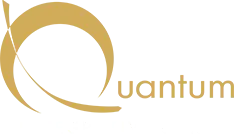The human body is a complex interplay of energy and structure. While Western medicine often focuses on the physical, tangible aspects of health through modalities like X-rays, the energetic dimension is frequently overlooked. This is where kinesiology and biofeedback, a branch of applied mechanics, come in. They bridge the gap between the body’s subtle energy systems and physical manifestation.
Kinesiology: Bridging the Gap Between Energy and Structure
Kinesiology provides a fascinating bridge between the energetic and structural aspects of the human body. By testing muscle strength as an indicator of overall health, kinesiology can detect imbalances in the body’s energy systems. These imbalances, often undetectable by conventional methods, can contribute to various health issues.
Biofeedback, a closely related technique, offers a more quantitative approach to assessing the body’s energetic state. By providing real-time feedback on physiological responses such as heart rate, muscle tension, and brainwaves, biofeedback empowers individuals to learn how to regulate these responses and improve overall well-being.

Combining Biofeedback and X-Rays for a Holistic View
While biofeedback and kinesiology delve into the energetic realm, X-rays provide a clear image of the body’s physical structure. This imaging technique is invaluable for diagnosing bone fractures, joint abnormalities, and other structural issues.
Combining these seemingly disparate approaches creates a comprehensive picture of an individual’s health. Biofeedback and kinesiology can identify underlying energy imbalances that might contribute to structural problems, while X-rays confirm the physical manifestation of these imbalances.
For example, chronic back pain might be attributed solely to a herniated disc based on X-ray findings. However, biofeedback might reveal underlying stress and muscle tension, exacerbating the condition. A more effective treatment plan can be developed by addressing the physical and energetic components.
Moreover, biofeedback can be used to monitor the progress of treatment plans. As physical imbalances are corrected through chiropractic adjustments or other therapies, biofeedback can assess changes in the body’s energy field. This provides valuable information about the effectiveness of the treatment and allows for necessary adjustments.
Biofeedback and X-rays offer complementary perspectives on health. By combining these techniques, practitioners can gain a deep understanding of their patients’ conditions and develop more effective and personalized treatment plans. This holistic approach to healthcare emphasizes the interconnectedness of the body’s physical and energetic systems, leading to improved outcomes and overall well-being.
Instagram: @quantumchirofl
Facebook: Quantum Integrative Care
LinkedIn: Quantum Integrative Care
